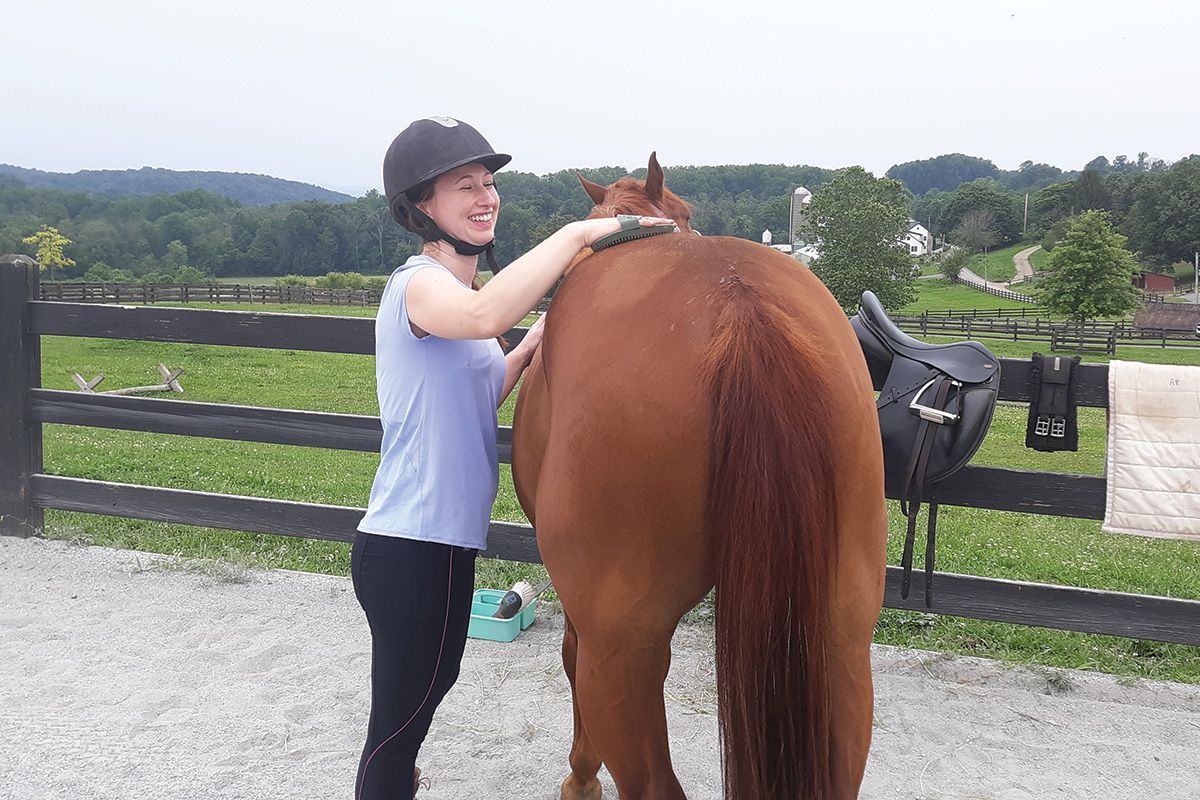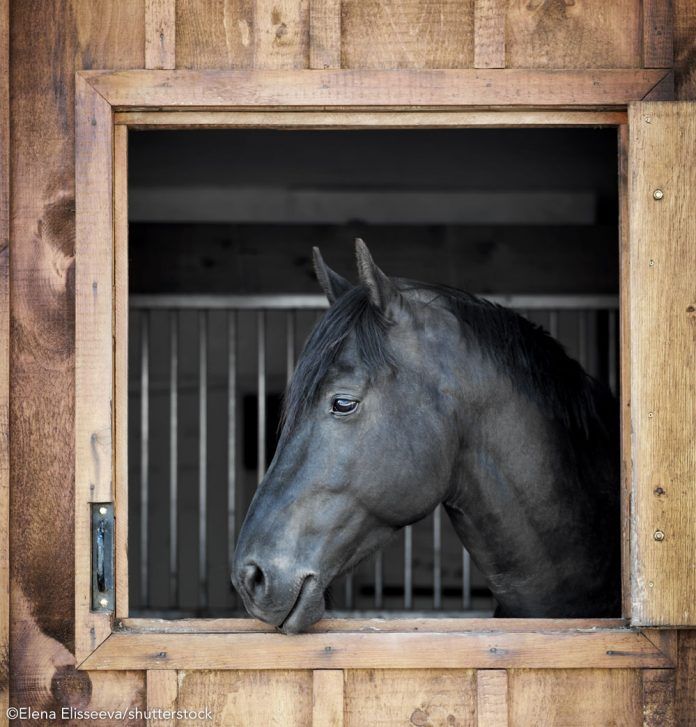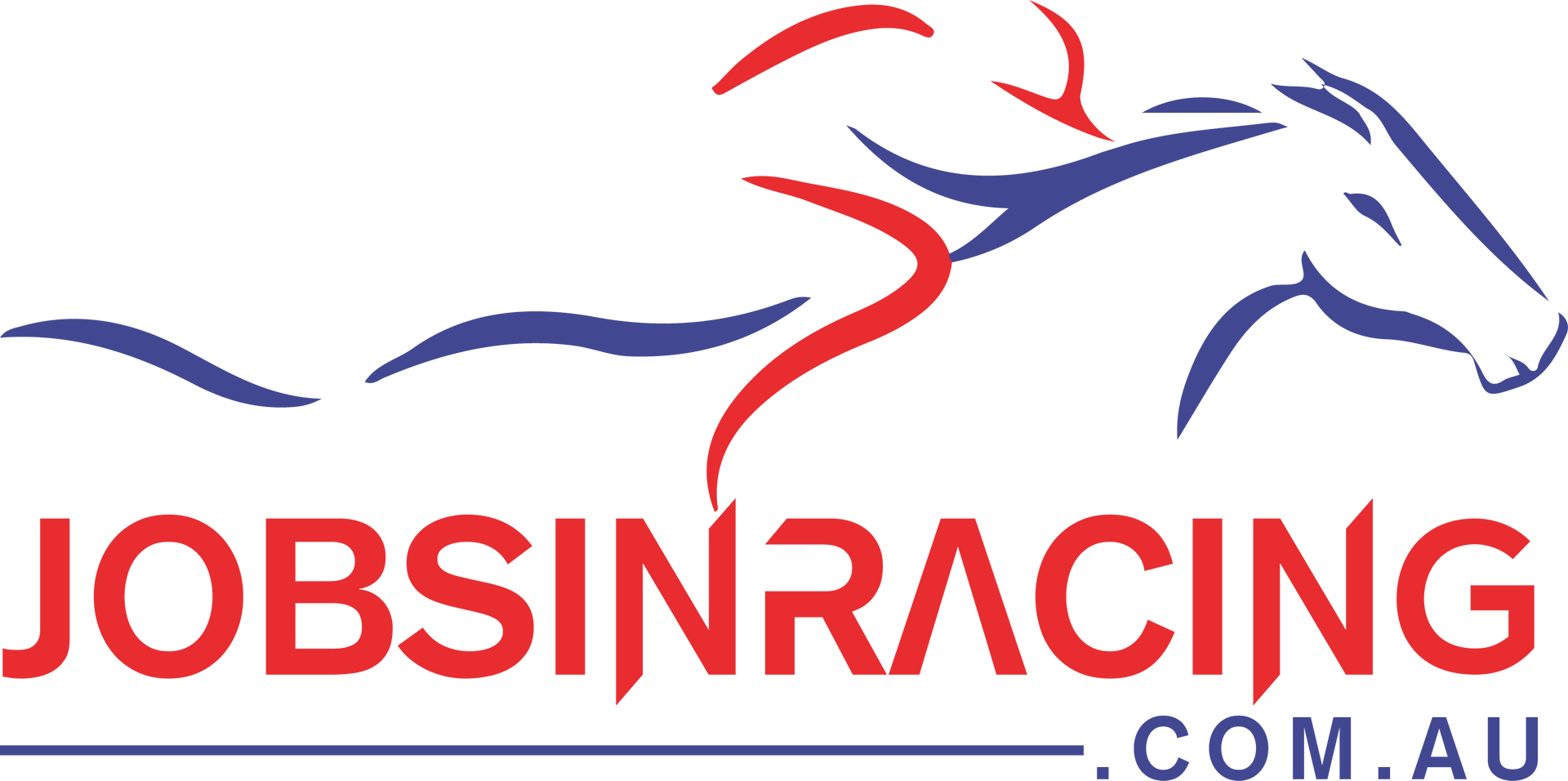How to Back a Horse Trailer
It’s the end of a busy horse show day, and you’re worn out. The horses are loaded, your gear is packed, and you just want to head for home. Unfortunately, the parking lot that was wide open when you parked is now crowded with trucks and trailers. And the only way for you to get out is to … yikes! Back the trailer.
While you can often ask for help, there is some peace of mind in knowing how to confidently back the trailer on your own. Don’t just shrug helplessly in defeat—backing a trailer is challenging, but less difficult than some of the skills you’ve mastered on your horse.
1. Practice Ahead of Time
It might sound mundane to practice backing a trailer. Life is busy enough as it is—you’re lucky to carve out enough time to take your horse out on the weekends, let alone practicing backing with an empty trailer when you don’t need to.
But think of it this way—you wouldn’t expect to load your horse for the very first time on show day. Instead, you would take time and carefully train him to safely and efficiently load in the trailer long before you need to take him to a show. So why treat yourself any differently?
Learn your backup procedures in a quiet, low-pressure environment where you have plenty of time to think through the steps without a deadline, without horses in the back that need to get on the road, and without your tired family demanding fast food for the trip home.
2. Learn the “Reset” Trick
First, learn how to recover from mistakes. If your trailer starts to pivot too quickly away from the truck, do this:
◆ Stop.
◆ Straighten the wheel.
◆ Pull forward slowly.
◆ Watch what’s happening behind you and pull forward until the truck and trailer are perfectly straight again.
◆ Now you’re reset and ready to keep trying. If you have room, you can reset at any time and quickly recover from a potential jackknife.
3. Try a Simple Turn in Reverse
The key to controlling your trailer in reverse is to understand how to make turns. This is the secret:
◆ Use the reset trick to get the rig completely straight.
◆ Stop moving.
◆ Turn your truck’s steering wheel in a direction opposite of what you want the trailer to do (this is probably the biggest mental challenge to overcome). For instance, if you’d like the trailer to turn to the right, start by turning your steering wheel left. Turn the wheel about half the way to its maximum distance. If you turn too little, not much will happen. If you turn too much, you get into jackknife territory.
◆ Move the rig in reverse a short distance—say 3 or 4 feet.
◆ Stop again.
◆ Take a good look at what has happened so far. There should be a gentle bend at the hitch between your truck and trailer—and your trailer should be aimed to the right a bit.
◆ Turn the steering wheel back to the right, so that the truck now follows the trailer’s path (this is important!).
◆ Start going in reverse again and keep a careful watch on what’s happening.
◆ If all goes well, the truck and trailer should stay in a nice gentle turn for as long as you need, with the truck following behind.
◆ Make small adjustments to the steering wheel to keep the curve the way you want it (see next step).
4. Make Tiny Adjustments as You Go
Whether you’re performing a turn or just backing straight up, the trailer will want to start deviating from its path the whole time, and you have to be ready.
◆ If the trailer starts drifting too far right, turn the steering wheel harder to the right to catch it.
◆ If the trailer drifts left, turn left harder.
◆ Imagine that the trailer is balancing in the air on its hitch and you have to move the truck to stay underneath it and keep it upright.
◆ Stop and think whenever you need to.
◆ Remember to use the reset trick early—if you do it before you get into big trouble, it only takes a couple seconds to fix problems.
5. Start Off Small
Part of what makes a horse trailer so difficult to maneuver in reverse is that it’s big and you can’t see everything around it. To help you master backing, try practicing with something more manageable, like a riding lawnmower or ATV with a little garden cart.
The steering concepts are identical, but you can effortlessly see what’s happening behind you and learn faster. This is a very helpful way to master the skill of backing a trailer.
6. Use Those Mirrors
Your side mirrors are important for helping you avoid obstacles while you’re backing, so use them to your advantage. You can even purchase side mirror extenders designed specifically for towing. But you also need to look out the back window (it will help you see how the trailer is pivoting) and out the driver’s side window.
The backup process doesn’t have to be fast. You can always stop moving, look out the window, and see what’s happening. You may even want to get out of the truck to take a closer look.
7. Try a Back Up Camera
If you have a newer vehicle, it almost certainly has a backup camera pre-installed. But did you know you can easily purchase an add-on backup camera for your horse trailer?
A backup camera will aid you in making precise turns in reverse, but the real way these shine is by showing you what’s in your blind spot directly behind the trailer. It’s a good safety tool. Some of these systems allow you to add an interior camera for watching the horses, too.
8. Keep the Trailer Hitched
Maybe you need your tow vehicle as a daily driver and can’t leave it attached to the trailer for any length of time. But if it’s not, consider leaving your truck and trailer connected for a week. Go out each day and practice backing into parking spot lines in an empty parking lot. Without adding in the hookup time, you’ll be more inclined to practice.
Backing the trailer is a very important skill to learn if you haul your horse at all, and should make life a little less chaotic next time you’re on the road with your animals. Good luck!
Source: https://www.horseillustrated.com/how-to-back-a-horse-trailer


